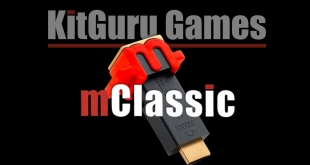Before we get into the main testing section of the review, one of the primary selling points of the Sapphire Pure Black P67 Hydra is that you can also pair up two nVidia graphics cards and can even use an AMD and Nvidia graphics card in a mixed configuration.
This is a daunting task for any company.
The Lucid chip has to allow for GPU load balancing in the same manner as Crossfire and SLi but even across mixed platforms.
Load balancing demands computational power and the Hydra chip contains a RISC core based on the Tensilica Diamond Architecture.
In the real world however things didn't go smoothly for us and we would experience random hard locks, system crashes and freezing when loading up any 3D title. This was with two nVidia GTX460's in the system and we spent many hours playing with settings and configurations. I have the hair loss to prove it.
The driver installed on the Sapphire software CD is actually out of date, so we updated to the latest version on the lucidlogix driver page – Version 1.7.104a.
This latest driver offers support for 3DMark 11 and has many bug fixes implemented.
Above, 3DMark Vantage running with two GTX 460's installed. We also tried a Sapphire HD6850 and an eVGA GTX460 paired. The correct way for installation is to install the two video card drivers first in Windows 7, then to install the LucidLogix driver last. If you don't follow this procedure the system will sometimes hang on start up or not work at all. The platform relies on game profiles and driver optimisations to allow the titles to work.
- X-Mode: A Radeon 4000 or newer and GeForce series G90/G200 graphics card
- N mode: Two GeForce series G90/G200 graphics cards
- R mode: Two Radeon 4000 or newer graphics cards
Sadly, we couldn't get a HD6850 and a GTX460 to play ball, nor a GTS450 and HD5770, or any other combination of AMD and Nvidia graphics card we have available. We had a few configurations work for a few minutes, then crash shortly afterward.
Driver 1.7.104a changelist:
- 3DMark11 support
- NVIDIA GTX570 GPU support
- ATI HD69xx support
- Nvidia WHQL Driver 263.09 issues fixed
- ATI WHQL driver 10.12 support
- Batman: Arkham Asylum bug fixed
- Optimization Indicator bar feature added
- GUI new look and features
- Passmark test tool on Vista – fixed
- Devil May Cry 4 benchmark issue fixed
- ALT+TAB issues fixed
- GTS250 + HD5670 configuration supported
The Lucid drivers page does indicate that all Nvidia and ATI drivers should work, but in the list above it says 263.09 ‘issues fixed' and 10.12 driver is supported (December 2010). We tried a clean system install with these older drivers and didn't experience any improved stability. Frequently games and synthetic benchmarks would load and then crash shortly afterwards.
The 263.09 driver did work with two GTX460 graphics cards in pseudo SLI but this driver is dated the 22nd of November 2010, so we can't assume that many graphics enthusiast users would be happy running with a four month old driver build. I know I wouldn't be.
The image above shows performance levels of various video cards. The GTX 460 OC SLi results are taken from a MSI P67A-GD65 motherboard with the same partnering hardware as the Lucid results taken from the Sapphire motherboard. Its not an exact science, but it shows that Lucid pays a noticeable performance penalty.
We lost track of how many hard locks, BSOD's and system crashes took place over the last week using the Lucid Hydra Platform.
 KitGuru KitGuru.net – Tech News | Hardware News | Hardware Reviews | IOS | Mobile | Gaming | Graphics Cards
KitGuru KitGuru.net – Tech News | Hardware News | Hardware Reviews | IOS | Mobile | Gaming | Graphics Cards








